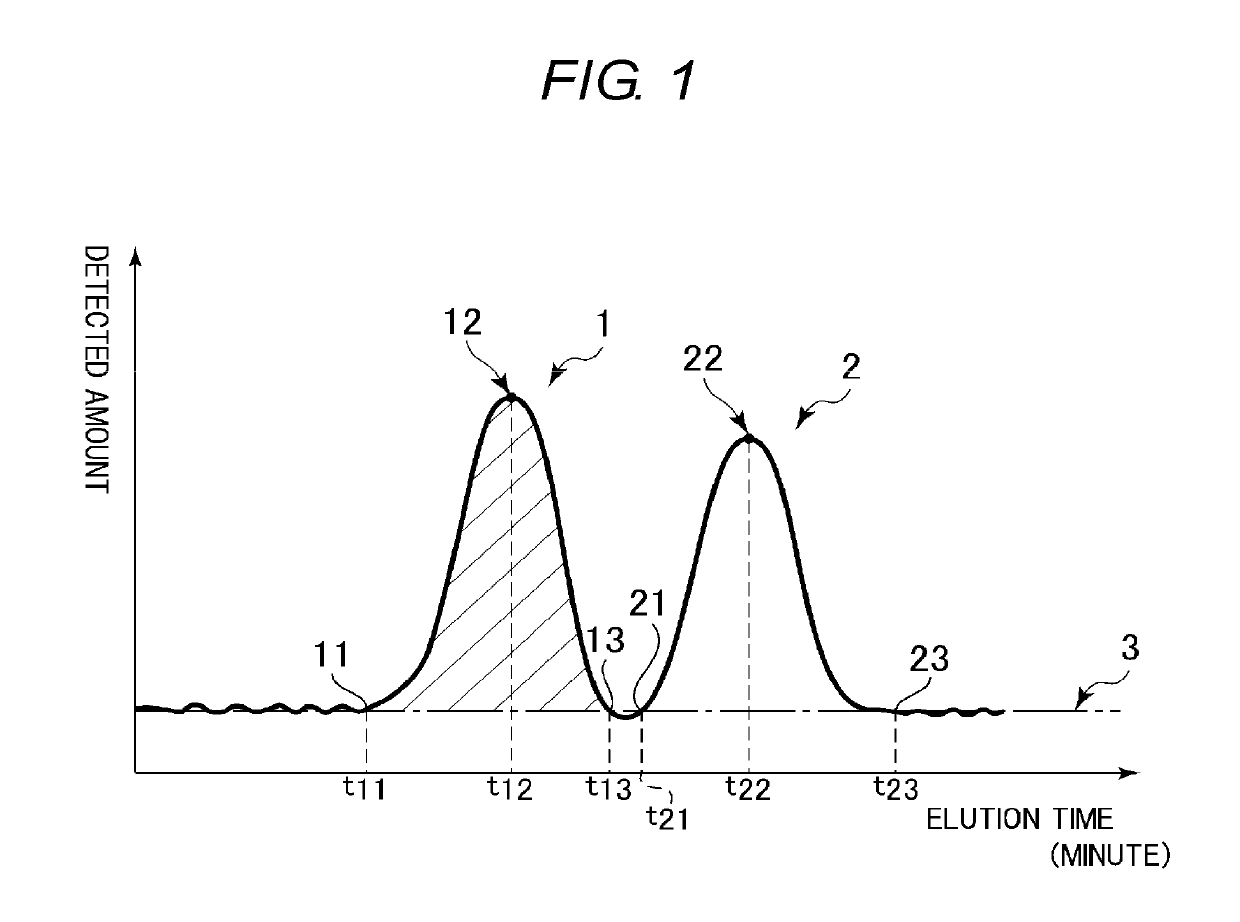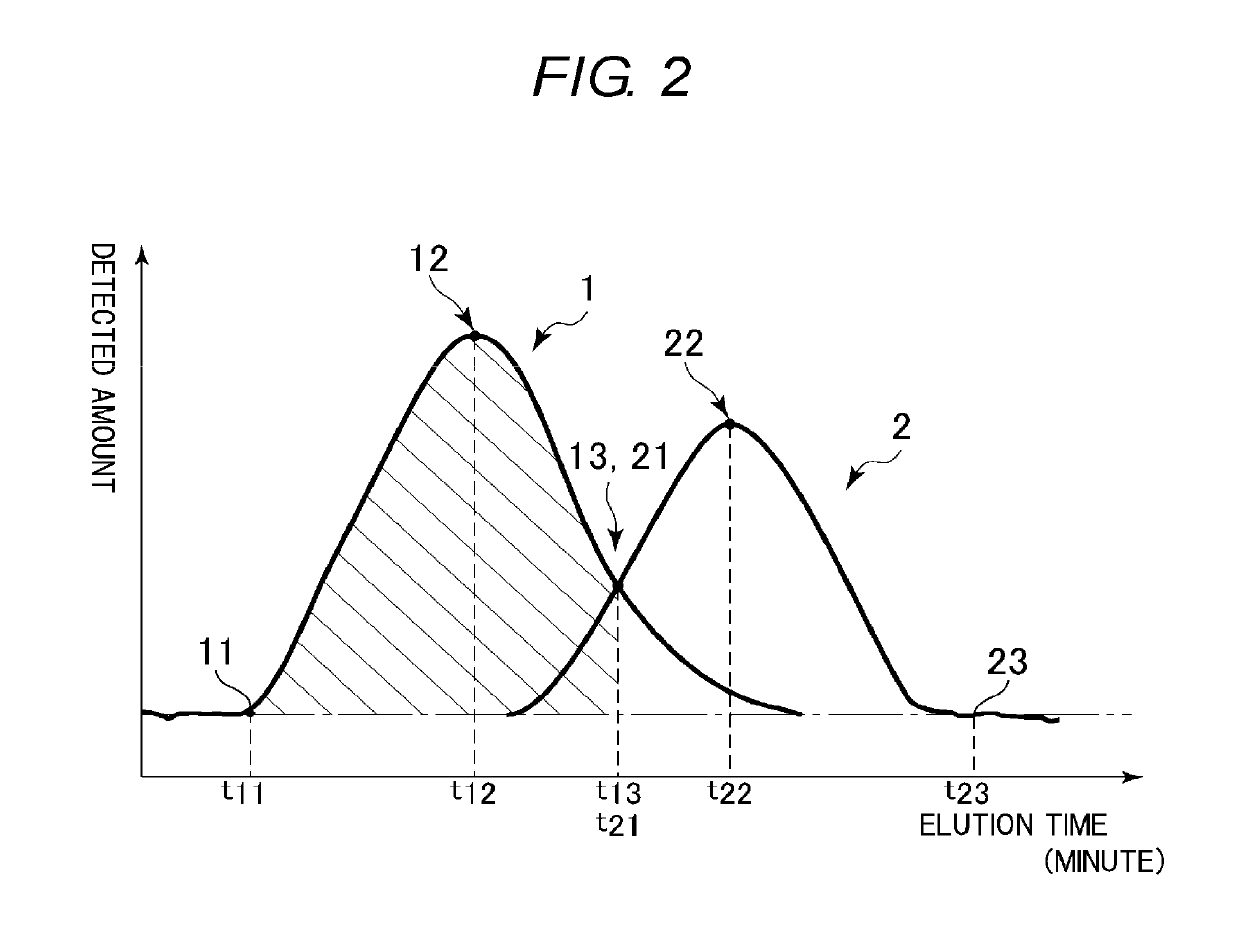Polyvinyl acetal composition
a technology of polyvinyl acetal and composition, which is applied in the direction of layered products, glass/slag layered products, chemistry apparatus and processes, etc., can solve the problems of poor transparency of interlayer film for laminated glass, difficult to make polyvinyl acetals compatible with each other, and difficult to use as commercial products. , to achieve the effect of less elution time, poor transparency and higher polarity of analysis target compounds
- Summary
- Abstract
- Description
- Claims
- Application Information
AI Technical Summary
Benefits of technology
Problems solved by technology
Method used
Image
Examples
manufacturing example 1
[0100]A 10 L (liter) glass container equipped with a reflux condenser, a thermometer, and an anchor type stirring blade was charged with 8100 g of ion-exchanged water and 660 g of polyvinyl alcohol (PVA-1: viscosity average polymerization degree: 1700, saponification degree: 99 mol %) (PVA concentration: 7.5%). The temperature of the contents was raised to 95° C., and the contents were completely dissolved. Subsequently, while the contents were stirred at 120 rpm, the temperature thereof was gradually lowered to 5° C. over about 30 minutes. Thereafter, 384 g of butylaldehyde and 540 mL of 20% hydrochloric acid were added thereto, and a butyralization reaction was performed for 150 minutes. Thereafter, the temperature was raised to 50° C. over 60 minutes, was maintained at 50° C. for 120 minutes, and was lowered to room temperature. After a precipitated resin was washed with ion-exchanged water, an excessive amount of sodium hydroxide aqueous solution was added thereto to neutralize ...
manufacturing example 2
[0101]A 10 L (liter) glass container equipped with a reflux condenser, a thermometer, and an anchor type stirring blade was charged with 8100 g of ion-exchanged water and 723 g of polyvinyl alcohol (PVA-2: viscosity average polymerization degree: 1700, saponification degree: 92 mol %) (PVA concentration: 8.2%). The temperature of the contents was raised to 95° C., and the contents were completely dissolved. Subsequently, while the contents were stirred at 120 rpm, the temperature thereof was gradually lowered to 5° C. over about 30 minutes. Thereafter, 453 g of butylaldehyde and 540 mL of 20% hydrochloric acid were added thereto, and a butyralization reaction was performed for 150 minutes. Thereafter, the temperature was raised to 65° C. over 60 minutes, was maintained at 65° C. for 120 minutes, and was lowered to room temperature. After a precipitated resin was washed with ion-exchanged water, an excessive amount of sodium hydroxide aqueous solution was added thereto to neutralize ...
manufacturing example 3
[0102]A 10 L (liter) glass container equipped with a reflux condenser, a thermometer, and an anchor type stirring blade was charged with 8100 g of ion-exchanged water and 723 g of polyvinyl alcohol (PVA-3: viscosity average polymerization degree: 1700, saponification degree: 89 mol %) (PVA concentration: 8.2%). The temperature of the contents was raised to 95° C., and the contents were completely dissolved. Subsequently, while the contents were stirred at 120 rpm, the temperature thereof was gradually lowered to 5° C. over about 30 minutes. Thereafter, 430 g of butylaldehyde and 540 mL of 20% hydrochloric acid were added thereto, and a butyralization reaction was performed for 150 minutes. Thereafter, the temperature was raised to 58° C. over 60 minutes, was maintained at 58° C. for 120 minutes, and was lowered to room temperature. After a precipitated resin was washed with ion-exchanged water, an excessive amount of sodium hydroxide aqueous solution was added thereto to neutralize ...
PUM
 Login to View More
Login to View More Abstract
Description
Claims
Application Information
 Login to View More
Login to View More - R&D
- Intellectual Property
- Life Sciences
- Materials
- Tech Scout
- Unparalleled Data Quality
- Higher Quality Content
- 60% Fewer Hallucinations
Browse by: Latest US Patents, China's latest patents, Technical Efficacy Thesaurus, Application Domain, Technology Topic, Popular Technical Reports.
© 2025 PatSnap. All rights reserved.Legal|Privacy policy|Modern Slavery Act Transparency Statement|Sitemap|About US| Contact US: help@patsnap.com


